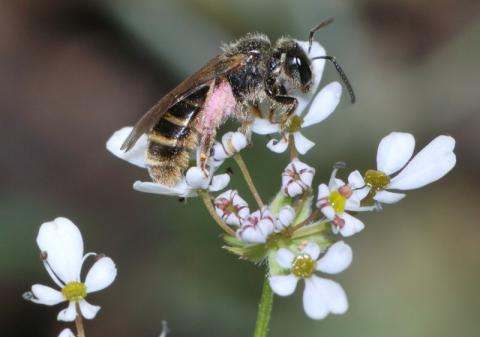Anouk Glad spent two years working on this topic as part of a postdoctoral fellowship in partnership with TerrOïko, which has just resulted in the publication of an article in the journal Ecological Modelling (*).
In it, Anouk details the work she has done with SimOïko, our species life simulation software.
Her goal was to improve the modeling of wild bees' movements when they go out to forage, taking into account the impact that the landscape can have on their movements and therefore on their pollination activity
To achieve this, she designed and tested, with our CEO Sylvain Moulherat, a new simulation module for SimOïko, which combines two types of approaches:
- modeling foraging movements, based on CPF (Central Place Foraging) algorithms: bees leave their nest to forage and return once they have found the food they are looking for or have traveled a maximum foraging distance.
- modeling the impact of the landscape on movements, using the SMS (Stochastic Movement Simulator) algorithm: individuals choose their trajectory as they move forward, based on their perception of the different natural environments around them
The result of this combination is a version of SimOïko that allows for the consideration and evaluation of the influence of numerous parameters: the presence of available food resources, their distance from nests, their respective levels of attractiveness (individuals favoring the most rewarding resources), the probability of individuals collecting them, and the ease with which the species studied can or cannot evolve in a given natural environment it encounters.
Anouk then compared the results from this SimOïko module with both field samples and the results obtained using another model (InVEST). The latter is traditionally used to assess the probability of bees visiting floral resources in a given area, but it does not take into account the effect of the landscape on their movements.
The verdict? SimOïko performs as well as InVEST in most cases, but provides better predictions in certain land use configurations, namely in the presence of large agricultural plots or when the landscape is highly mixed (e.g., a mix of grasslands and forests).
This proves, if proof were needed, that landscape structure does play a role in the pollination potential of bees. It would therefore be worthwhile to take this into account when designing, for example, measures to improve crop pollination by insects.

